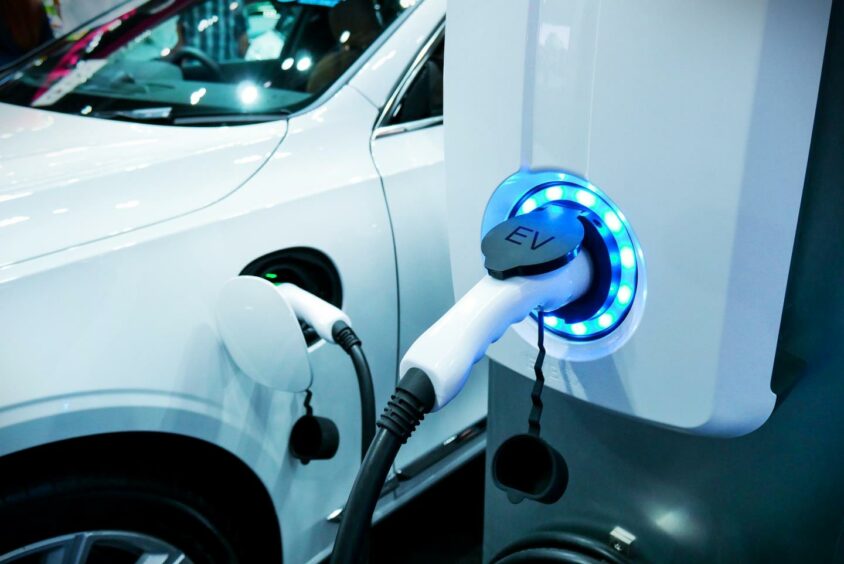
Lithium-ion batteries are ubiquitous, whether it be in consumer products, electric vehicles (EVs) or commercial and industrial energy storage. Nowhere is this more evident than in EVs, which are making meaningful inroads into the transportation market, with market data company Canalys estimating 6.5 million EVs were sold worldwide in 2021, more than double the prior year.
Road transportation makes up almost half of global crude oil demand and, as such, represents a critical area for decarbonisation. However, there is a long way to go yet as EV sales still represent only 9% of global passenger vehicle sales.
EV sales are expected to continue to increase sharply in the coming years, helped by policy support, battery density and cost improvements, more widespread charging infrastructure and increasing vehicle manufacturer uptake of EVs. Bloomberg New Energy Finance (BNEF) estimates that to achieve a net zero global fleet by 2050, zero-emission vehicles need to represent 60% of global new passenger vehicle sales by 2030.
Currently, the emphasis falls squarely on lithium-ion batteries to deliver this revolution as they offer the most economic and efficient approach to decarbonising road transport. This will not only place a huge burden on battery raw materials – lithium, cobalt, manganese, nickel – but also electricity demand, requiring infrastructure and grid upgrades.
Renewables are another key component of the energy transition and the pace of their roll-out continues to accelerate, spurred on by their increasing cost competitiveness and new government targets to decarbonise energy systems.
The recent natural gas crisis resulting from Russia’s invasion of Ukraine will only amplify this trend. For example, Germany is preparing draft legislation to source nearly all its energy supplies from renewables by 2035, up to 15 years earlier than previously planned.
The problem with solar and wind, though, is their intermittency, making them less suitable for baseload power supply unless combined with energy storage and/or more flexible generation technologies. As a result, energy storage is set to play a key role in decarbonisation efforts globally, providing the flexibility renewable power plants and grids require to generate reliable electricity. Wood Mackenzie estimates that global energy storage capacity is set to increase 27x this decade.
Batteries are one of the most advanced options to meet this energy storage requirement and have a massive role to play if we are to reach net zero. Battery storage to integrate renewables into power grids is gaining traction and growing fast. However, most energy storage systems being adopted are lithium-ion, which have significant limitations when used for stationary energy storage.
Lithium-ion batteries are suited to rapid response and short duration grid supply only, with typical installations having discharge durations of just 30 minutes to 2 hours. They also have poor sustainability credentials (cobalt, lithium), relatively high and rising costs, and safety risks from thermal runaway.
Despite this, the incidence of batteries being used for grid level energy storage is rising, placing an additional strain on lithium-ion battery raw materials and supply chains. Improvements and/or alternatives to lithium-ion batteries need to be advanced quickly to allow both EV and future energy storage demand to be met.
At this stage it is hard to definitively say which new battery chemistries will be the winners, although lithium-sulphur, zinc bromide non-flow, sodium-ion and liquid-metal batteries look the most promising to us.
One thing is clear, alternative battery chemistries to lithium-ion are desperately needed if we are going to satisfy the massive increase in battery demand that will be required to deliver the energy transition, and there is room for more than one technology.
We are in the early stages of the development of the energy storage market for batteries and the landscape is evolving rapidly. Before the latest ‘next gen’ batteries are even commercialised, new more powerful chemistries are being advanced. Step changes in cost, energy density, safety and sustainability are coming – those who do not remain at the cutting edge of the technology could well find themselves obsolete
Recommended for you
